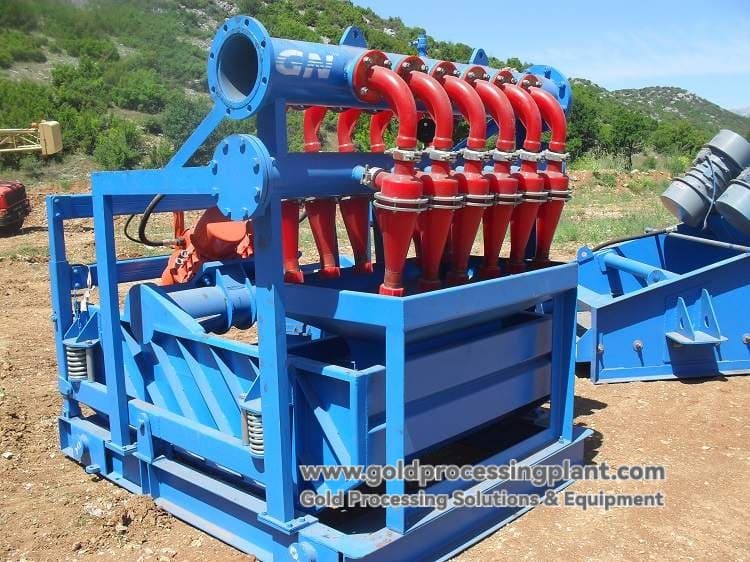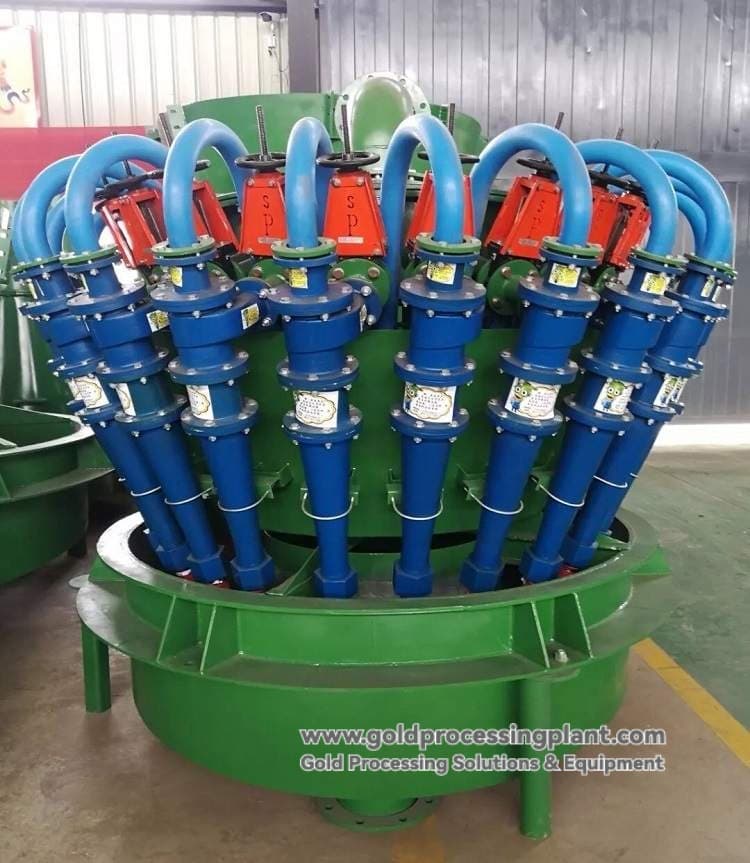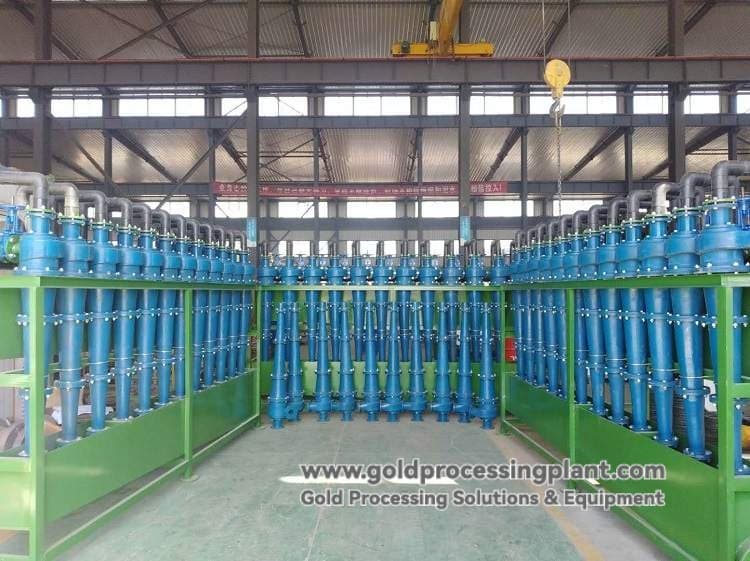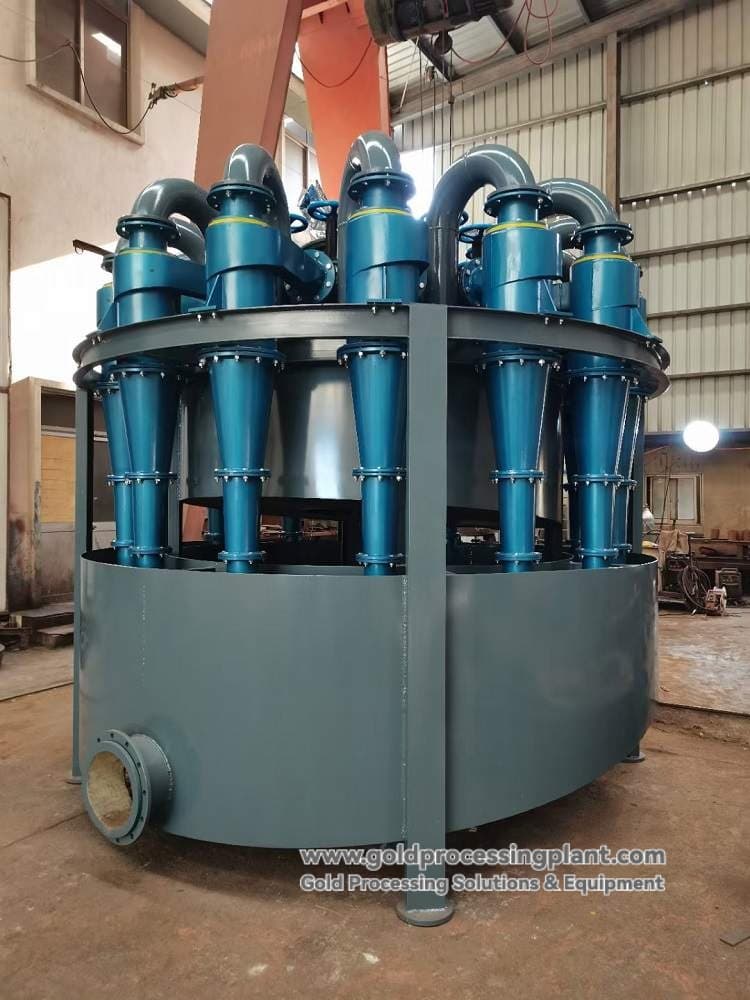Hydrocyclone Overview
Hydrocyclone is a kind of high-efficiency mineral processing equipment which utilizes centrifugal force to classify, separate, concentrate and desliming. Its main function is to separate the coarser and heavier particles from the slurry, which is widely used in all kinds of mineral processing plants, and it is one of the core equipments to realize the grading of ore particles according to the particle size.
The core principle is that the slurry enters the conical container along the tangent line under high pressure, generating strong rotary motion, and the particles of different sizes are separated by different centrifugal forces. It has the significant advantages of simple structure, large processing capacity, high classification efficiency, small footprint and so on.
Hydrocyclone structure and working principle
1. Structural composition:
-
Cylindrical cylinder: the upper part is cylindrical, and the cylinder wall is equipped with tangential feeding port.
-
Conical container: the lower part is conical, cone angle size affects the separation accuracy and processing capacity.
-
Overflow pipe: located at the top of the cylinder center, used to discharge the overflow containing fine particles (Overflow).
-
Sand sinking nozzle (Underflow): located at the bottom of the cone, used for discharging sand sinking containing coarse particles (Underflow).
-
Wear-resistant lining: Key parts (such as feeder, inner wall, sand sinker) are often lined with wear-resistant rubber, silicon carbide or polyurethane to prolong the service life.
2. Principle of operation:
Under the pressure (usually 0.05-0.25 MPa) provided by the sand pump, the slurry is shot into the cyclone from the tangential feed opening at a high speed (about 5-12 m/s) to form a strong external (downward) and internal (upward) cyclone.
-
Coarse/heavy particles: they are thrown to the wall of the machine under the effect of huge centrifugal force, move downward with the external cyclone, and are finally discharged from the sedimentation nozzle at the bottom.
-
Fine/light particles: due to the small centrifugal force, they form an internal cyclone in the center low-pressure area, move upward and are discharged through the overflow pipe.

Main application areas of hydrocyclone
Hydrocyclones are mainly used in the following operations in the beneficiation process:
-
One-stage/two-stage closed-circuit milling and grading: It is the main application to form a closed-circuit cycle with ball mill to separate qualified fine-grained products in time and return coarse grains to regrinding.
-
Concentrate/intermediate ore regrinding and classification: Highly efficient classification of intermediate products to be regrinded.
-
Desliming operation: Remove the ore sludge that affects the sorting effect before sorting, or dewater and concentrate the products after sorting.
-
Tailings disposal:
-
Damming and backfilling: the tailings are graded, the coarse tailings are used as damming material, and the fine mud is discharged to the end of the tailings storage.
-
Whole tail filling: as pre-grading equipment, separating coarse sand to reduce the load of subsequent dewatering equipment.
Hydrocyclone Advantages and Disadvantages
| Advantages |
Disadvantages |
| ✅ No moving parts: simple structure, low failure rate, easy operation and maintenance. |
❌ Fast wear: parts such as feeding mouth and sedimentation nozzle are easy to wear out under the high-speed slurry scouring, and wear-resistant materials are required. |
| ✅ Large processing capacity: high production capacity per unit volume, small footprint. |
❌ High power consumption: sand pump is needed to provide pressure, high energy consumption. |
| ✅ High grading efficiency: up to 80%~90%, fine grading size (up to micron level). |
❌ S ensitive operating parameters: changes in feed pressure, concentration and particle size will significantly affect the classification index. |
| ✅ Low cost, easy to modify: low cost, can be connected in series or parallel to meet different process requirements. |
|
Model selection and summary
There are many specifications of hydrocyclone (common ones are Φ50, Φ75, Φ100, Φ125, Φ150, Φ200, Φ250, Φ300, Φ350, Φ500, Φ660, etc.), which can be selected as single unit, parallel unit or tandem unit according to the process requirements such as processing capacity, overflow fineness, sedimentation concentration and so on. Correct selection is the premise to ensure that it reaches the optimal working condition.
Hydrocyclone is an indispensable key classifying equipment in modern mineral processing plant. Despite the problems of wear and energy consumption, its excellent classification efficiency, flexible application and low cost make it play an irreplaceable role in the fields of closed-circuit milling, desliming and tailings treatment, and it is an important tool to enhance the economic efficiency and technical index of the whole beneficiation process.





